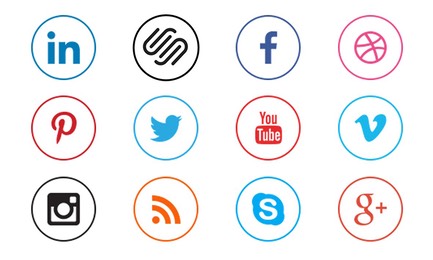Are you running your own business? This might be for you...Local Dad and digitial comms professional Nick Zea-Smith is blogging for us about marketing tips for your small business

Seven Steps for Small Businesses Communicating During Coronavirus
So, you’re probably reading this in your living room or home office. You weren’t expecting to be sitting here reading this when you wrote your business plan for 2020.
The TV is on, you’ve been glued to daily government briefings and are vigorously washing your hands on top of having to manage children’s education programmes emailed on a weekly basis from the school. This is in addition to juggling the normal ‘stuff’ entrepreneurs manage, and you’re now are dealing with something new. A crisis. And there’s no business manual or training for it.
Decisions you make now, impact people on so many levels, in terms of employees, customers and the business now. Next week may as well be the year 3,000 for all you care. What do you do?
I’ve spent the last 20 years working as a public relations director in the auto industry. It’s my job to help organisations communicate everything from glamorous product launches to the aftermath of the Fukushima nuclear disaster in Japan.
Whatever has or is happening, there is one thing that unites them – people. A crisis is typically a human event with human reactions and each given situation is different. It will invariably change faster than people, organisations and even governments can react.
This is the case with the outbreak of coronavirus and whether you’re a small home office enterprise, mid-size business or large organisation, how you communicate to staff, suppliers, stakeholders and customers right now and in future is critical.
Don’t just look at what’s happening today, think about ‘what next’ and while you have some down time prepare – if you can – for when the green light is pushed again. Can you use this as an opportunity to look at product lines that make money while you sleep, or can you optimise slow moving goods?
Can you revamp a website, product photography, or look at the shop – does it need a re-brand or makeover? Take some time to educate yourself on areas of the business that you’re not sure of such as marketing, PR and social media…!
I’ll deal with this one in another post, but right now as they used to shout on “Dad’s Army”, ‘Don’t panic’. After assisting a hotel chain that has just lost 100 per-cent of its short term business because of the virus, I sat with my team and we thought about how we can help small businesses with little or no experience of this situation, or do not have access to a publicist or media agency.
The result is the Zea-Smith Associates seven-step public relations ‘Comms Shot’ for communicating during any crisis.
Step 1
Establish what’s happened – what/where/when/why/how/time. These are known to journalists as the six wise men.
Step 2
Gather as much information as you can from respected sources, whether that’s your local authority, specialist agencies, first responders, health authority, regulators or government department. Make sure data is up to date and remember, the people you’re going to be talking to are probably as unprepared as you.
Step 3
Call the Hands. Gather your team and get an overall picture of what’s going on in the business. Think of this situation report as an initial health check. Ideally, you need to have key decision makers around you – heads of department or relevant experts. Get them to tell you how each department is working and where the weaknesses are. Also find out how many people you can access.
Step 4
Prepare a response together that reflects purpose and brand values. If it sounds fake, it won’t work. When communicating, ensure the message is reliable and consistent across the organisation. Pick key spokespeople now. They must be authoritative and speak with purpose or be an expert with specialist knowledge. This may not be the CEO, chairman, VP or president of the company, and you might find that “Bill” who is director of production or “Trudy” from logistics is better equipped.
Step 5
General Patton once said: “A plan is only a plan until the first bullet is fired”. Human events generate human responses, and everything won’t necessarily go to plan, so check in with your staff as they are currently under pressure and doing things, they either didn’t expect to be doing that day or beyond their skill set. You may also find that the team working with you today is completely different from the one you have in six months’ time, so it’s got to work with whoever is a key spokesperson.
Step 6
Prevent information voids – think and herd suck. If people don’t know, they follow the herd and buy toilet roll, so clearly communicate in simple, understandable phrases what has happened, how you are responding operationally and what your next steps are with a call to action.
Before issuing to media, send it first to members of your key team/ business partner/ husband/ trusted friend and – if required – gain approval from senior team. Take a deep breath, and ask if they’re happy with the response, and adjust if needed. Issue first to employees.
Now you need to communicate to the rest of your organisation – customers, supply chain, contractors and people you interact with who are vital to your operation. Your people are your most important tool available to you right now, so use them as your advocates and ambassadors. An example of this is the hotel industry. The welcome and front of house team tend to know what’s happening than anyone else and might be better connected, so crisis teams tend to include them.
Step 7
The communication pump is primed and beginning to flow. Don’t just leave it there. It’s like a long car journey, you’ve started the engine and set off. Now it’s a rest-stop and chance to inspect the tyres and oil. Check in with senior staff and get feedback on how the message has been received.
You need to monitor and measure the responses – the good, the bad and the ugly. It’s as important as the message itself. If your employees don’t get it, neither will your customer. Don’t flood people with information, but if you need to, gather your team in three/six hours to engage with them and if needed modify your message accordingly.
Traditionally, people turned to radio, TV and evening papers for news. Now it’s Twitter, Facebook, Telegram and TikTok. Go there and check to see what’s happening. Also look at internal company comms intranets and message boards.
Also see what competitors or the market is doing. Respond respectfully to social media posts considerately if you feel it’s needed, but don’t feed the trolls. Even though you might want to, your job is to pour water on the fire and take the heat out of the situation.
What Next? Rinse and repeat this process on a daily basis until – as a team – you feel you are beyond the crisis point. And remember, when it’s over, thank everyone from staff and customers to suppliers for going beyond their comfort zone, stepping up to the plate and joining you on the front line. A small care package or moral boosting event for your team is probably now called for but ensure you’re 1.5 apart!
This blog post inspired by @RodCartwright and Matt Hodges-Long, based on PRCA guidelines for practitioners. While this crisis communications “Comms Shot” is not exhaustive, we hope these insights assist.
In my next post, I’ll deal with content creation that works for small businesses as you re-build, but if you have specific questions or require assistance, please contact our team via our website www.zeasmithassociates.com
By Nick Zea-Smith, Director, Zea-Smith Associates PR
Nick is the Director of Nick-Zea Smith Associates. Feel free to contact him for help with anything PR, Marketing and Brand Management-related.
Contact:
Nick Zea-Smith
Director
Nick-Zea Smith Associates
Mob: +49.17624832249
Email: nick@zeasmithassociates.com
www.zeasmithassociates.com

